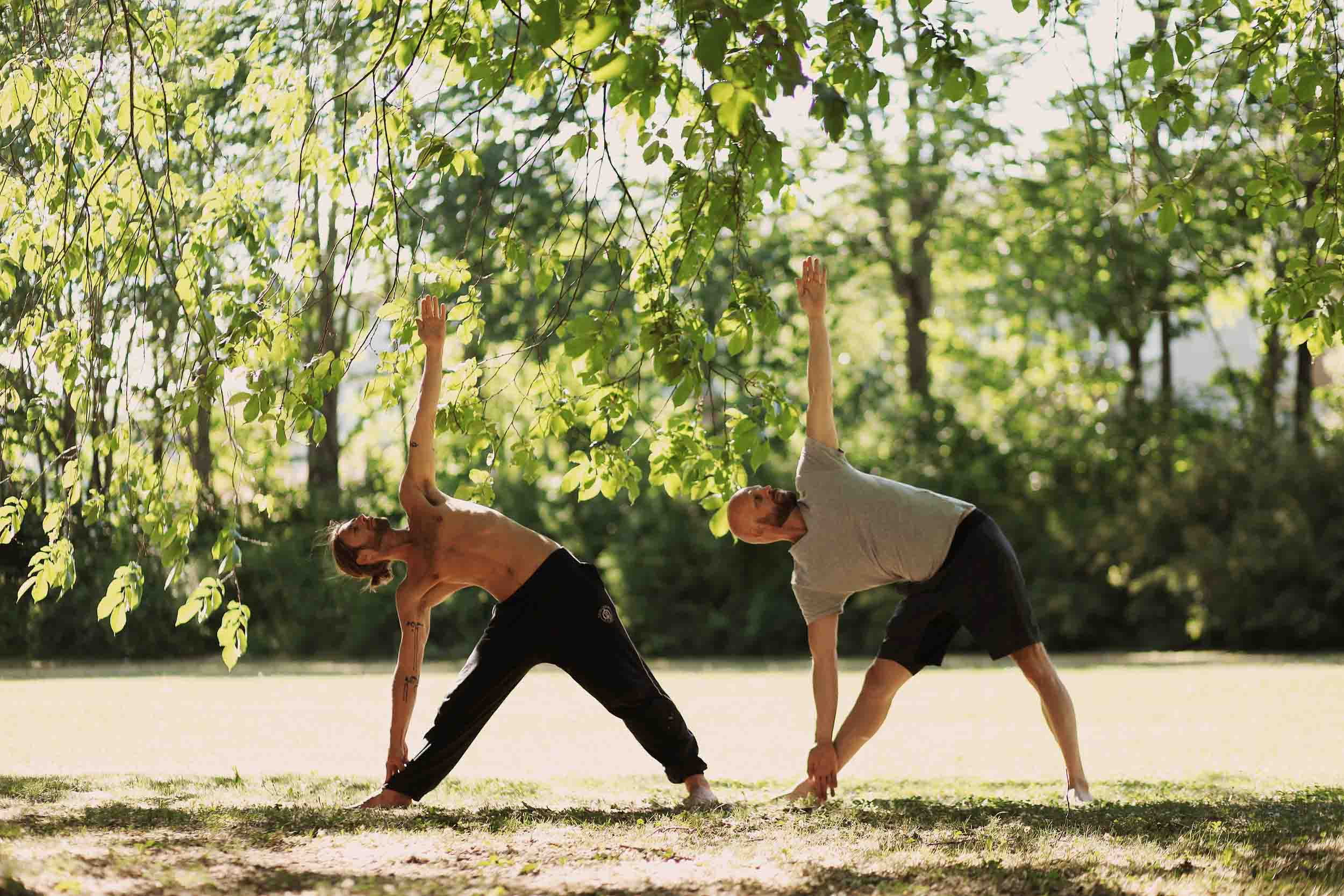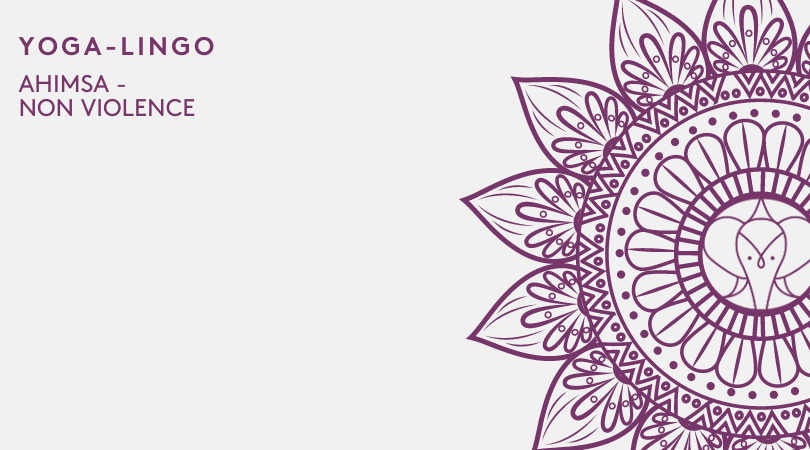What is Yoga? A Beginner’s Guide
What comes into your mind when you hear the word ‘yoga’?
For some people, it’s rolling mats and stretchy athletic wear.
For others, it’s twisting about into a pretzel while doing a headstand.
And for still others, it’s that thing mum does on weekends.
But what is it, really? This online yoga guide, intended for the curious layman, will help you get started as to what this whole yoga thing is.
The History of Yoga
Yoga is a large family of spiritual, mental, and physical disciplines originating from India. Its history stretches almost as long as there has been an Indian civilization of any kind, in their many and varied forms. Just like India itself, it’s influenced by both Hinduism and Buddhism.In the West these days, it’s most visible as a form of exercise, having arrived in the early 20th century by way of both Indian teachers and Western disciples.
Basics
As a form of exercise, yoga is mainly focused on getting into asanas, or poses, as well as pranayama, or breathing exercises. You may already have encountered the other articles on this very site that cover specific poses and breathing exercises.
However, not all yoga is the same; there are different styles depending on whether you’d rather grace your way into a meditative state, or sweat out the cares of the world in a good session of hot yoga.
An important difference between yoga and a more typical session at the gym is the lack of equipment. Yoga mainly focuses on your own body and balance. It could just be physical exercise, or it can be a means to reduce stress and worry, or it can be a component of your personal spiritual journey.
It might even be all of the above.
The good news is that yoga in the West has no religious affiliation, and there’s no need to believe in anything to practice it.
Of course, yoga isn’t all the same. Various styles exist, depending on the teacher and what the teacher wants his students to achieve.
Hatha Yoga
Hatha yoga is where most of Western yoga comes from. Translating roughly to ‘force’ in Sanskrit, it’s a system of physical exercises and techniques. It helps to think of hatha yoga as the fundamentals, where everything else comes from. The later styles all take their inventory of postures from hatha.Yin yoga
Yin yoga is a slower, more meditative style that has you surrendering to the postures and letting your energy flow inside your body. It releases tension in the muscles and relieves tightness. To quote Sarah Powers, one of the teachers of Yin yoga, ‘it cultivates inner stillness.’ Generally, Yin yoga is performed with very little muscular exertion, unlike hatha yoga.
Ashtanga Vinyasa Yoga
If you’d like something more active, there’s ashtanga vinyasa yoga. It’s all about flow and mastering a set of poses in a given series. It’s original teacher Sri K. Pattabhi Jois pushed a heavy focus on postures through this style. He considered it essential to focus on posture first before mastering the other seven parts of yoga. It’s often thought of like a modern-day form of classical yoga, thanks to its connection to ancient yogic scriptures.
Of course, this isn’t the be-all and end-all of yoga. There are more styles than these, and it’s best to find the one that works for you, depending on your needs. The next question, of course, is what do we get out of yoga?
Benefits of Yoga
First of all, yoga challenges you in different ways. Ever thought about balancing yourself on one leg? It’s not something you typically do every day or have any reason to. You’ll get all-new challenges, and you’ll look at your body differently after you’ve done a good bit of yoga.
In physical terms, yoga can improve strength and balance. Spending a bit of time supporting yourself on one leg or both arms helps build your core and the limbs in question.
The poses will also help develop flexibility, helping counter the loss of flexibility that comes with advancing age. It can help with your joints, as the movements required for yoga are gentle enough not to impact them, definitely a concern if you’re dealing with arthritis. Back pains arise from muscle tightness and spinal compression, which yoga can help with.
Do I Need Equipment?
You don’t even need any equipment. It always helps to go to a studio or gym to learn from a teacher, and that’s a great way to get started; that way, you can get feedback on what you’re doing right or wrong, and get further pointers and recommendations from an expert. There’s even the option of reading an online yoga guide, like you’re already doing if you’d really rather stay at home, and that’s fine too. Once you have the poses down, you can just as easily roll out your mat at home and practice there.Mental Benefits
And there are psychological benefits as well. Most importantly, yoga relieves stress, which helps with a lot of physical pains. Tension headaches, for instance. It’s why there’s more than a few professionals in high-stress jobs who’ve taken up yoga. Sometimes it’s counting one to ten slowly; other times it’s a well-practiced mantra and breathing exercise.Further, yoga also means connecting your mind with your body, as well as mindfulness: focusing your attention on the current experience, the here and now, without reacting to it or judging it. The poses help in that way, since all your focus is on the breathing and movement, taking mental space away from worries and distractions. It’s a form of moving meditation, really, because your focus is on what you’re doing, and not what’s happening in your mind or elsewhere in the world.
Once you’ve got this process down on the yoga mat, you can carry it and translate it into the rest of your life.
Self Care
Now, this isn’t specific to yoga itself, but there’s also the disconnection from the world for a time. Having an hour entirely to yourself without having to jump on your phone or computer can be remarkably refreshing.Common Concerns
Now, you might be worrying that you’re not flexible enough for yoga. But that’s a misconception. Yoga isn’t about the pretzel poses. They’re a means to an end, not the end itself. The key to yoga is the connection between mind and body. As long as you are completely in the moment, with breath, mind, and body united, you’re doing yoga.
Also, most of the poses don’t need all that much flexibility. They do take some instruction getting into, but you don’t need to be an Olympic gymnast to get into them once you’ve got them down. You’ll grow into the flexibility you need as you practice.
Above all, yoga is non-competitive. Yoga is about you, your fitness, your balance, your journey to unify your body with your mind. There may be yoga competitions, but they aren’t the entirety of yoga; you and your mat at home are just as valid as twenty guys sweating their way through poses in a hot room.
Summary
Yoga is a low-impact means of exercise that almost anyone can get into, with various styles that can fit any number of personalities and preferences. It can help both young people grow into their bodies, and old people keep their bodies fit. It can relieve stress and focus the mind, and best of all, it needs no real equipment, except maybe a mat, to keep you from slipping.The world of yoga is an expansive one, and a world that can not only keep you fit but also calm. And whatever walk of life you come from, you won’t need much to get started in yoga, and you’ll be just as welcome as any other here.









